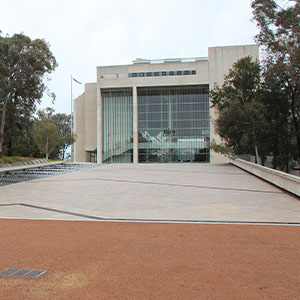This was an application for a group costs order pursuant to s 33ZDA of the Supreme Court Act 1986 (Vic). As is commonly the case, much of the evidence filed by the plaintiffs in support of the order was confidential, and so the reasons were, in some respects, expressed in general terms.
The class action alleges that the defendants engaged in misleading or deceptive conduct, in representing to the plaintiffs that they would receive a ‘loyalty discount’ when they renewed their home and contents insurance policies. The plaintiffs allege that as a result of algorithmic demand modelling, instead of receiving a discount, they in fact received a ‘loyalty uplift’.
GCO Made
Justice Watson was satisfied that a GCO was ‘appropriate or necessary to ensure that justice is done in the proceeding’. He noted that the plaintiffs preferred a GCO model and regarded it as conferring significant benefits. For example, a GCO would provide:
- a simple, transparent and readily understandable method for the calculation of the plaintiffs’ costs;
- protection that any compensation will not be eroded by costs which exceed the given percentage;
- a measure of certainty regarding the percentage of any recovery amount which the plaintiffs would receive (subject to the power to vary a GCO under s 33ZDA(3) and deductions for matters other than the plaintiffs’ legal costs); and
- an alignment of interests between the interests of the plaintiffs and class members and those of Slater & Gordon. The evidence established that if a GCO was not made, the plaintiffs would seek to obtain third party litigation funding for the proceeding, which would likely result in greater deductions from any recovery in the proceeding than under the proposed GCO.
GCO Percentage
His Honour then considered whether the proposed GCO percentage rate of 33% was appropriate, taking into account the following factors:
- whether the percentage was ‘appropriate or necessary’ to ensure that justice is done in the proceeding;
- considerations of reasonableness and proportionality;
- whether the GCO would provide a return to the plaintiffs’ solicitors which is proportionate to the risks undertaken by them on the assumption of their obligations under s 33ZDA. The following issues were held to be relevant to that assessment:
- the novelty, complexity and risk involved;
- the amount that may be recovered; and
- the capital the legal practice anticipates it will invest in the proceeding;
- a comparison with rates set in other cases;
- the principles employed in other contexts to analyse returns on investment (in considering the reasonableness and proportionality of the costs allowed to the legal practice); and
- the important safeguard provided by s 33ZDA(3), which allows the Court to revisit the GCO rate in light of later known facts regarding the proceeding (though the fact that an order as to the percentage rate can be amended later is not a reason to act arbitrarily or to depart from the requirements of s 33ZDA).
While his Honour acknowledged that the percentage rate sought had been agreed to by the plaintiffs in their retainer, there was no evidence that the plaintiffs had any awareness of GCO rates in other proceedings. Further, each of the plaintiffs referred in their evidence to the close supervision of the Court over the making of the GCO and the setting of the rate.
His Honour noted the factual complexity and the substantial risks in establishing loss and liability. He accepted that it is very difficult to accurately estimate the size of the class and claim and the necessary budget at an early stage in proceedings.
However, his Honour did not regard the specific characteristics of this case as warranting a percentage beyond the percentage ordered in similar consumer class actions. There was nothing novel about this proceeding. He undertook a detailed analysis of GCO rates in other class actions (specifically comparing consumer class actions with shareholder class actions) and ultimately held that a GCO percentage rate of 27.5% was appropriate.
Dawson v Insurance Australia Ltd [2024] VSC 808
Supreme Court of Victoria | Watson J | 20 December 2024
Plaintiffs’ Solicitors: Slater & Gordon
Defendants’ Solicitors: Herbert Smith Freehills
Plaintiffs’ Funder: N/A
We're here to help
Contact us today
Learn more about our class actions work
We're Australia's leading class action practice, and we've obtained more than $5 billion in settlements for our clients.
Easy ways to get in touch
We are here to help. Give us a call, request a call back or use our free claim check tool to get in touch with our friendly legal team. With local knowledge and a national network of experts, we have the experience you can count on.
Office locations
We’re here to help. Get in touch with your local office.
Select your state below
- VIC
- QLD
- NSW
- WA
- ACT
- SA
- TAS
- NT
We have lawyers who specialise in a range of legal claims who travel to Australian Capital Territory. If you need a lawyer in Canberra or elsewhere in Australian Capital Territory, please call us on 1800 675 346.
We have lawyers who specialise in a range of legal claims who travel to Tasmania. If you need a lawyer in Hobart, Launceston or elsewhere in Tasmania, please call us on 1800 675 346.


